• Γλυκό του κουταλιού κολοκύθι – مربى القرع •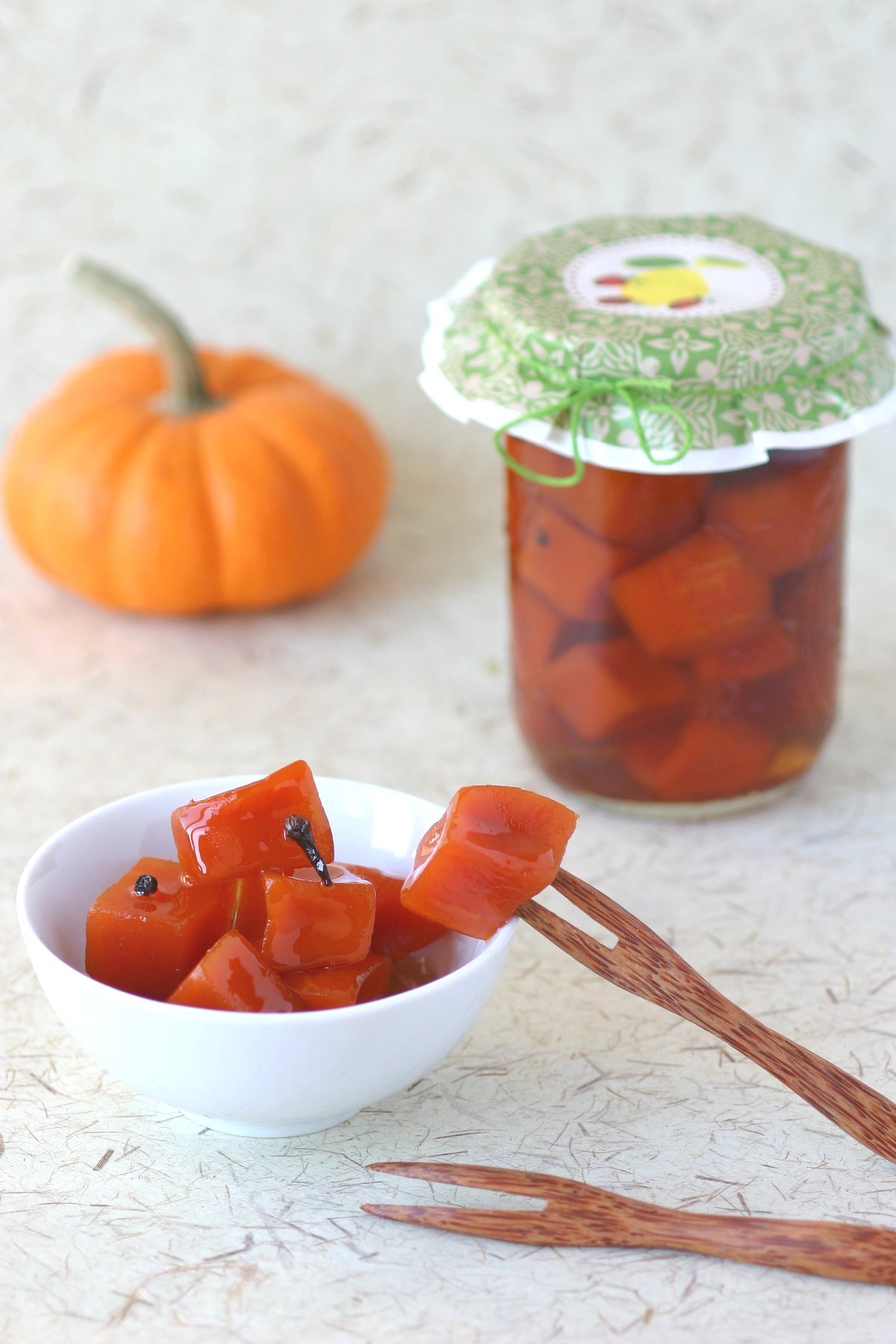
Pieces of pumpkin are transformed into sweet and glistening amber-colored jewels in this recipe for Pumpkin Preserves. Interestingly crunchy outside and creamy inside, you’ll want to replace your ordinary breakfast table preserves with these little gems.
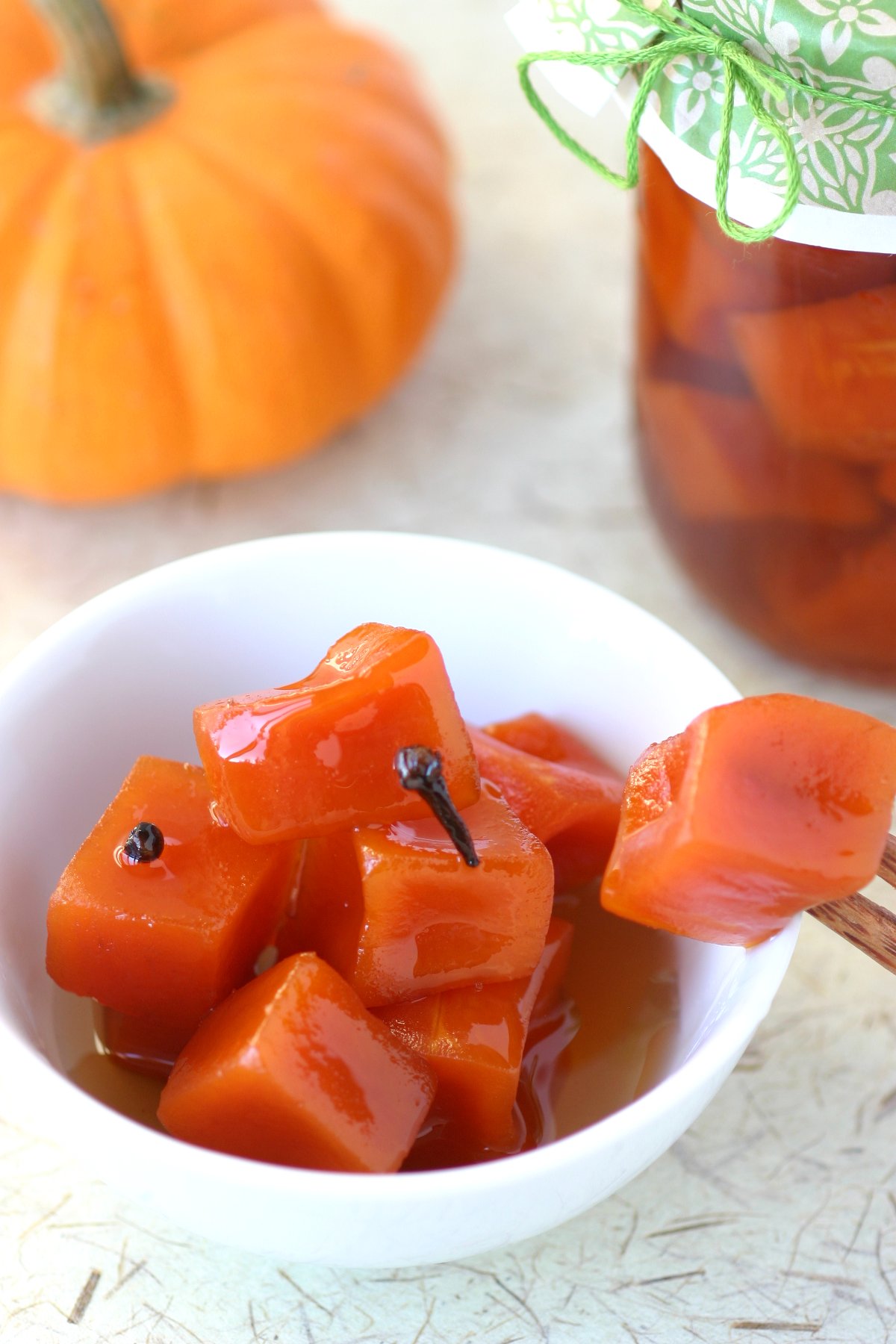
This recipe comes directly from my Teta (grandmother) in Jordan. She used to make these preserves for us every time she visited the US and we just loved these puzzlingly crunchy, glassy, and spiced pumpkin cubes.
If you try to cube up some pumpkin and just boil them in syrup, the cell walls in the pumpkin will break down and you will end up with a mushy, liquid mess. For this reason, you’ll need a special ingredient to achieve the firmness in these preserves.
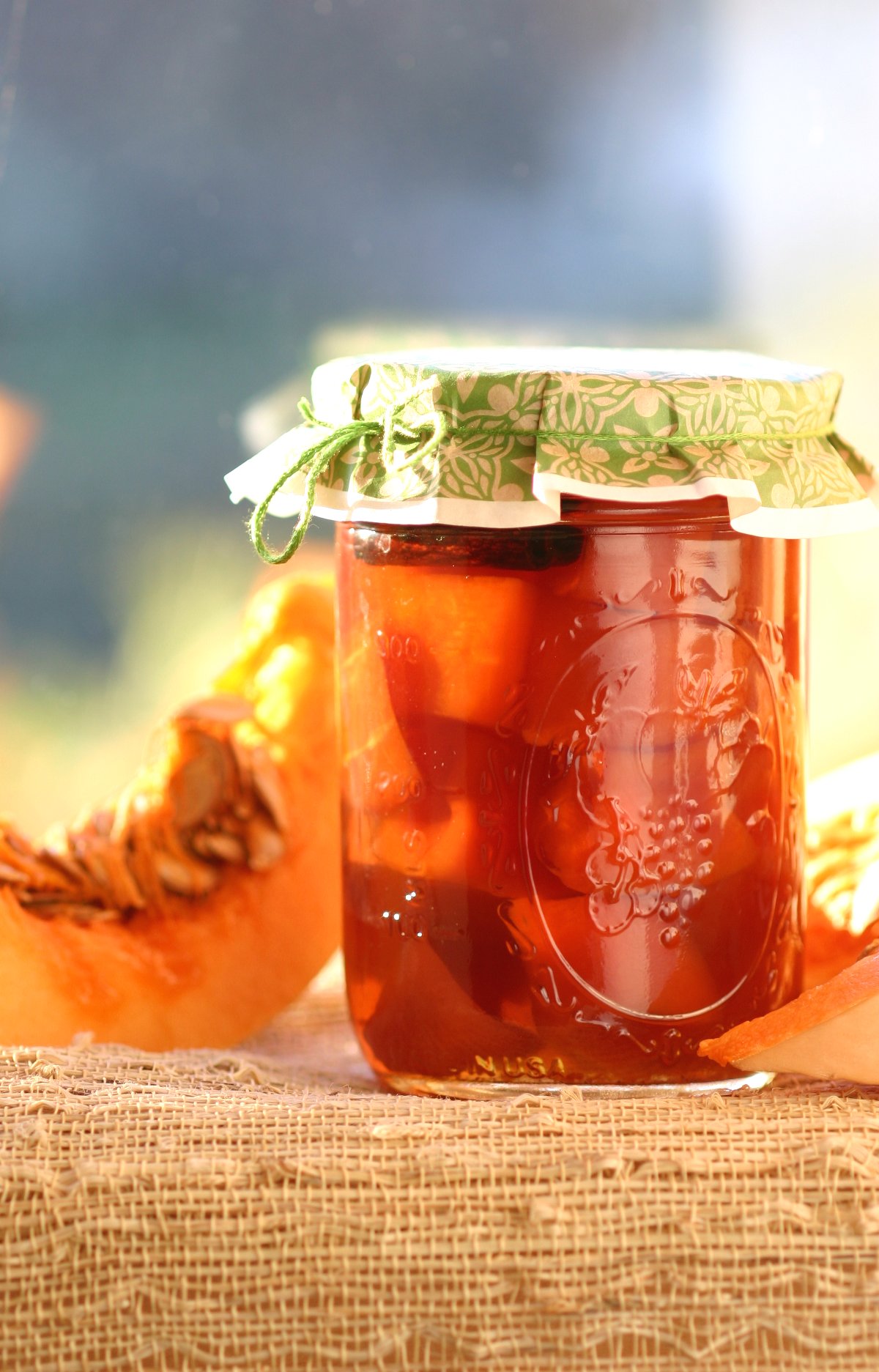
Calcium hydroxide (also known as pickling lime, slaked lime, or cal) is the secret to solidifying the sides of the pumpkin pieces and keeping them from disintegrating during boiling. Pickling lime is widely used in cooking to make things like crisp cucumber pickles and soft, malleable corn masa (in the process known as nixtamalization). It’s even used in some molecular gastronomy recipes as a firming agent and a pH modifier.
It’s also used in the construction industry for making things like mortar and plaster. Funnily, and somewhat unsettlingly, my grandmother would obtain her pickling lime powder by just walking to a nearby building construction site and asking the builders to fill her a bag of the white powder…
That’s probably not the recommended method of procuring this ingredient. Fortunately, pickling lime is easy to come by; you can buy some here on Amazon or you can find it in Mexican grocery stores (ask for cal) or, more rarely, in large supermarkets.
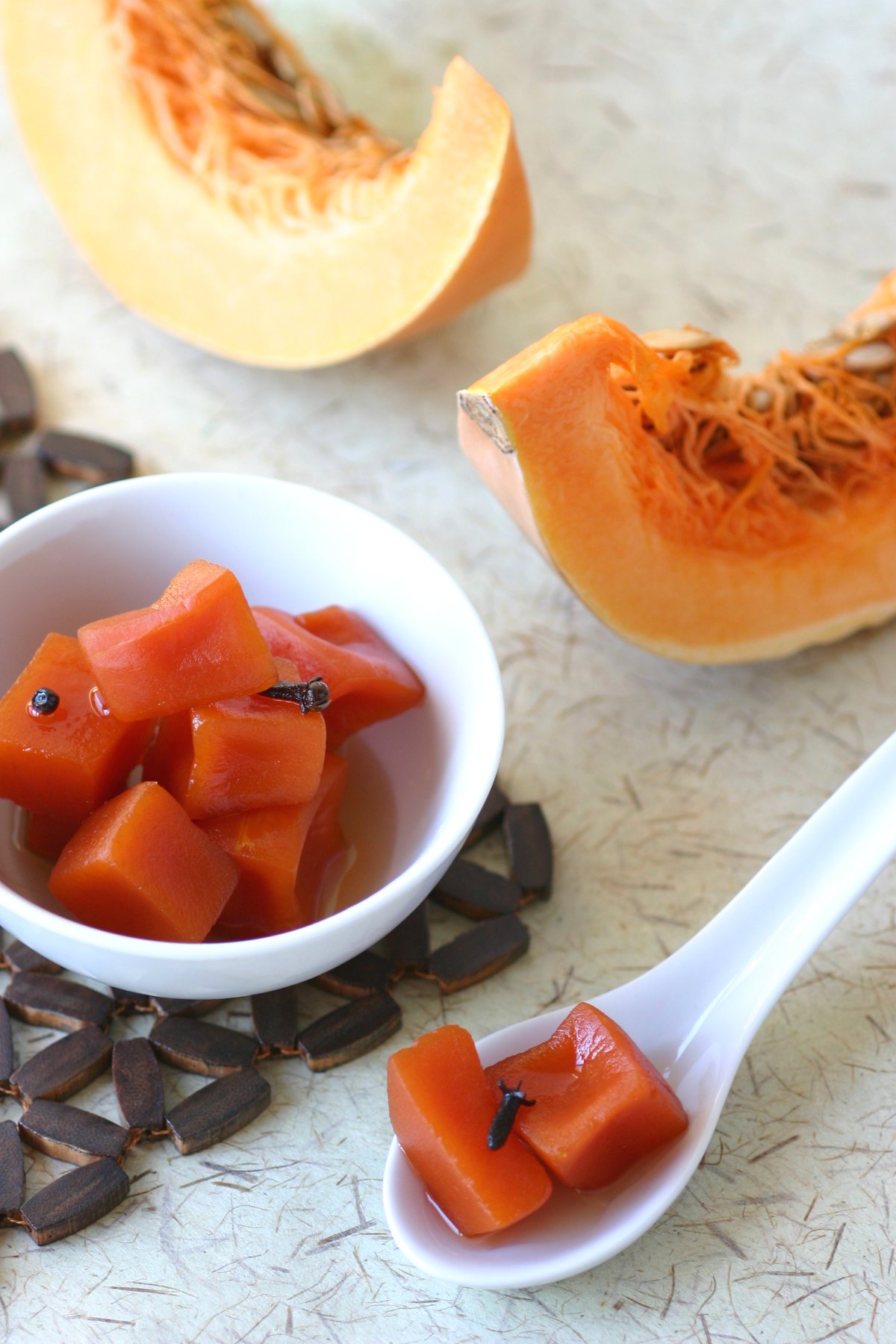
- 4 Tablespoons pickling lime mixed into 8 cups of water
- 1 kg (2.2 lbs) of peeled pumpkin, cubed ¾-1 inch in size
- 1½ liters (6½ cups) water
- 1½ kg (6 cups) of sugar
- 1 cinnamon stick
- 6-8 whole cloves
- Peel and cube the pumpkin into ¾ to 1 inch sized pieces.
- Gently mix the pickling lime powder into 8 cups of water in a glass bowl. Put the cubed pumpkin into this solution and put a small plate over the pumpkin to submerge. Set this bowl aside for 6-8 hours.
- After soaking in the pickling lime solution, remove the pumpkin and submerge and rinse in fresh water. Do this 3 times, changing the water each time, to ensure that all the calcium hydroxide has been removed. Drain the pumpkin and set aside.
- Make your syrup by boiling the liter of water, 1 kg of sugar, cinnamon stick, and cloves in a large pot. Bring it to a boil. Put the pumpkin cubes in the syrup and return to a boil.
- When the pumpkins in syrup come to a boil, reduce heat to low and simmer uncovered for 2 hours and 15 minutes. It sounds like a long time but you only need to stir it every 30 minutes or so.
- After simmering the whole time, the pumpkin preserves can now be carefully spooned into mason jars for canning or into jars with a rubber-gasketed lids. Pour the hot syrup into the jars to submerge the pumpkin pieces and seal.
-You can use any variety of pumpkin for these preserves: fairy tale pumpkin, cheese pumpkin, and even kabocha--all work great.
-When you eat all the preserved pumpkin pieces, you will be left with the syrup which can be stored in the refrigerator for months. Use it to sweeten coffees, teas, and lattes with a spiced pumpkin flavor.
-You can flavor these preserves in numerous ways. Some things that would be good to simmer with the pumpkin: orange peels, slices of ginger, a vanilla bean, star anise, or cardamom.

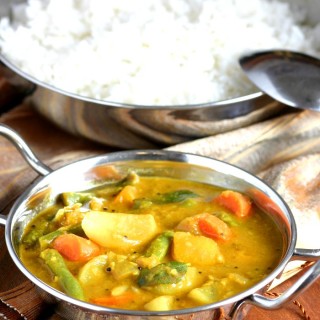
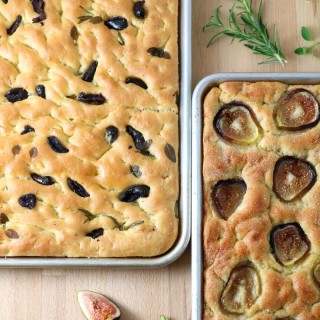
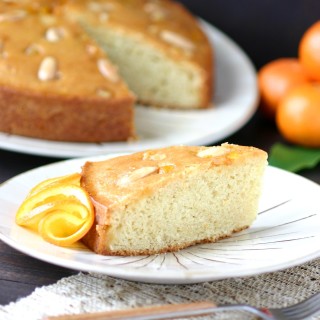
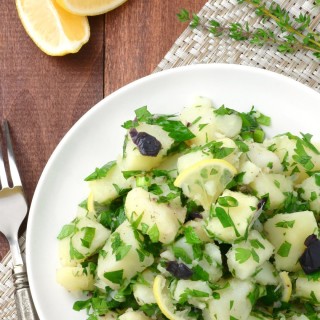
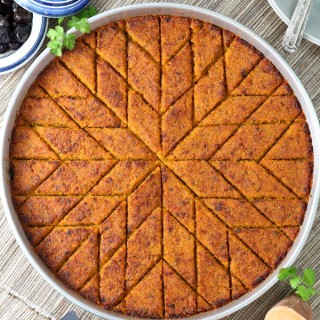
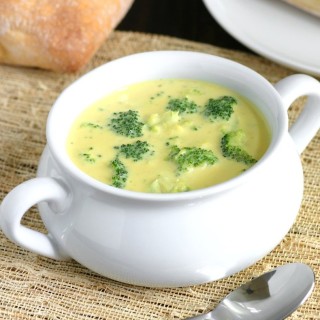
Best pumpkin preserves!!
Do you know if you can skip the pickling lime step and just use the sugar syrup with pickling crisp? Its calcium chloride and allows for a time save generally because you don’t have to do the whole soak and repeated rinse thing.
That’s a good question. I’ve played around with calcium chloride in the past while doing spherification of fruit juices, but I’ve never used it for this type of preserve, though.
For these preserves, you want the pumpkin to be very rigid so that it keeps a crunchy shell after the boiling in syrup. The issue I could see with calcium chloride, or pickling crisp, would be that it has a very salty taste. It’s fine for salty pickles but I think the amount you would have to add to make the pumpkin rigid enough would adversely affect the final taste.
I don’t have any on hand to do a quick experiment, but I’ll pick some up soon. If I can make it work I’ll update the recipe. Likewise, if you do a little test batch, I’d love to hear your findings!
I might not be able to get hold of pickling lime easily – but I’ve surely learnt something new and useful today. Thank you for this post.
I know what you mean. Pickling lime seems to have fallen out of favor because I kept getting confused looks even from markets that carry a plethora of home canning and pickling supplies. I still have some from my grandma in Jordan, but I did buy some online for testing this recipe and it worked like a charm. I still am amazed at how crunchy the soft pumpkin becomes. I’m glad you enjoyed it!
Thank you so much for this recipe! I am Macedonian and this “sweet” is made in my culture. In the Macedonian tradition, it was served in a small round flat glass dish with short side walls – a teaspoon full of one chunk of pumpkin and some syrup. It was served to visiting guests along with a cup of Turkish coffee and a glass of cold water.
When I was growing up in Toronto my baba (grandma) grew small sugar pumpkins in her backyard garden and every fall she made this pumpkin sweet with her home grown organic pumpkins. It was my absolute favourite and now I find myself wanting to make it for my family. Baba was such a resourceful woman, she too used to walk to construction sites in her neighbourhood to source her lime lol. Thank goodness we can buy it in stores in Toronto now since I am not as resourceful a woman as baba was. Thanks again Omar!
Thank you so much for the information and very nice personal anecdote about your grandma! What a wonderful memory you have of her. I don’t care how experienced we get with cooking…we’ll never be as good as our grandmas! 🙂 I also think it’s so interesting how a lot of foods from the Balkans are also enjoyed in the Middle East—thanks to history and close proximity.
Hi Omar,I love you website!!?Will you tell me please what other fruits will be good to preserve it pickling lime please? I think it might work with grapes as well but I am not sure! And also can you preserve veggies too and how? Thank you and have a great week!!
Hi Galina. Thank you!!
You can use many different fruits for this method. My grandma used to make apples, pears, etc. Butternut squash also works well. As for veggies…the most famous kind in the Middle East is baby eggplant preserves. You simply soak the whole, peeled baby eggplants or eggplant pieces, in the same solution and make the preserves the next day like the recipe. It comes out really nice and crunchy. It sounds weird because it is sweet but eggplants have an inherent sweetness to them anyway!
I’ve never tried grapes. That sounds amazing. However, I wonder if they would need to be peeled before soaking so the solution gets into the cells?
Enjoy and let me know how your creations come out!
Thank you so much Omar!! You are awesome!!???
I am going to make this recipe without the lime, as I don’t have any, not yo mention I have never heard of it. For crisping things up we here have used alum. However as long as I’ve made pickles and preserves have never used either. So will make them today without. Will let you know if they turn out to be a disaster, but not crisp does not mean uneatable.??
Hi Joanie! Yes, the pickling lime works to crisp the pumpkin so that it can hold up to the simmering. Without it, the pumpkin will disintegrate into something like a pumpkin butter. So in that case, if you are looking to make a broken down pumpkin puree, the amount of sugar in the recipe can be reduced. Good luck
I just made this and my finished bottles have a white sediment in them. I used cal, and I soaked and rinsed the pumpkin multiple times…. would this sediment still be cal residue? If so, I will have to store in the fridge right ?
Hi Daniel!
Hmm that’s odd… If it is still some of the cal, it is harmless but yes, you’ll want to store in the fridge. The calcium hydroxide raises the pH so even though the amount of sugar will act a preservative against water activity, storage in the fridge is the wisest choice.